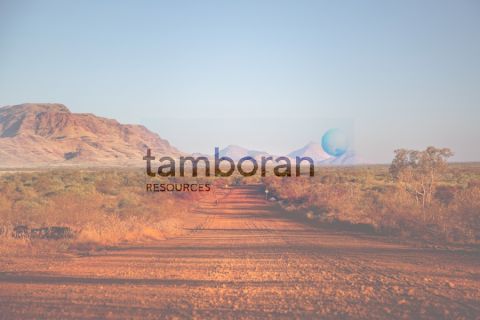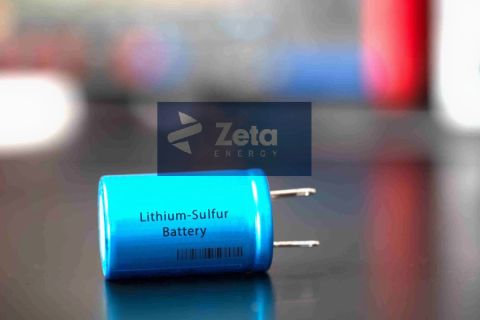This month EnCana Corp. marks its first anniversary as the only Maple Leaf member of the super-independent club, trading as ECA on the Toronto and New York exchanges. Depending on whether Devon Energy, Anadarko Petroleum or EnCana has forged a new acquisition, the Calgary-based firm is the first- or second-largest independent in North America now. In last year's fourth quarter alone, EnCana drilled 905 net wells and its gas sales from production and storage reached 3.04 billion cubic feet (Bcf) per day. For all of 2002, pro forma oil and gas sales averaged 723,000 barrels of oil equivalent (BOE) per day, up 12% per share from pro forma 2001 results recorded by the legacy companies, PanCanadian Energy Corp. and Alberta Energy Co. Natural gas sales last year of 2.8 billion cubic feet per day were up 16% per share. That sort of growth is expected to continue. President and chief executive officer Gwyn Morgan has told the Street he estimates 10% growth in 2003 and beyond. But growth without returns is a partial victory. That's why it is significant that last year, total shareholder return was 19%, including dividends. The Canadian giant earned C$1.25 billion or C$2.59 per share in 2002 and remains a top pick for several analysts on both sides of the border. Post-merger, Morgan has been fine-tuning the company by selling assets and redeploying cash to higher-growth, higher-margin areas where EnCana has more control-the company prefers 100% ownership of production and infrastructure whenever possible. Thus, EnCana sold its interest in two major pipelines last year for C$1.6 billion, sold its 10% stake in Syncrude for C$1 billion and divested C$700 million of noncore assets. But EnCana also went shopping, particularly in the U.S. Rockies, a core area since 2000, where in last year's fourth quarter, its gas output nearly doubled to 654 million cubic feet per day. That and the deepwater Gulf of Mexico are its two big U.S. growth platforms. Ecuador provides some international spice. Last year it bought Vintage Petroleum's blocks for US$137.4 million, to enhance its existing assets there. A new pipeline is to come online later this year to allow production to double. EnCana will be the country's largest private-sector oil producer. In the North Sea, the company made one of the largest light-oil finds of the last 20 years at Buzzard Field, which is estimated to hold 180 million barrels of oil net recoverable to EnCana. First oil is expected by 2006. Production at Ladyfern, its giant in northeast British Columbia, had declined to about 61 million cubic feet a day last December. But the company claims that was more than offset by rising gas production elsewhere in the Foothills region of the province due to increases at Grande Prairie and Greater Sierra, where EnCana has 2 million net acres and a five-year inventory of more than 600 well locations. On the vast prairies east of Calgary, EnCana is pursuing coalbed-methane gas production on some of its 4 million acres of 100%-owned, royalty-free holdings, where each year it produces about 1 Bcf of conventional gas. And, the company found 1 trillion cubic feet of gas in Panuke Field offshore Nova Scotia. A thoughtful, enthusiastic Morgan recently met with Oil and Gas Investor in Calgary, and assessed trends in the company and the industry at large. One mantra he lives by: The best acquirer is a good explorer and exploiter who never needs to do any deal. And, he says, "the North American gas picture is treading water and slowly sinking. The situation is very difficult." Investor Devon Energy just announced its merger with Ocean Energy. What do you make of all this consolidation? Morgan Five North American super-independents are emerging, but this is not about keeping up with the Joneses. We are now even with the new Devon and just behind BP and ExxonMobil in gas production. It's interesting-who would have thought that two independents would be among the top four gas producers, and ahead of ChevronTexaco and ConocoPhillips? One thing I think we do have that is highly unusual is strong internal growth. For the biggest independent to be the biggest-growth one is counterintuitive. But if every asset you have is measured by its ability to grow, you have a different story. Just about all our parts meet that criteria. We recreate an Ocean Energy every two years just from that. Investor So, after merging the two largest Canadian independents a year ago, might you be through? Morgan We do not have a lot of enthusiasm for another big corporate deal, but we will take a rifle-shot approach to tuck-in assets in our core areas. I've never been interested in someone else's decline curve. I always had the attitude that you never want to have to grow by making an acquisition. You want to have a highly value-creating internal growth engine by exploration and production. We think we can sustain 10% growth in production per share though 2006-and that's before bringing on Buzzard and Tahiti, and without acquisitions. What's interesting is the majors have been moving out of the traditional basins, leaving North America to the independents, who have generally thrived. But to keep feeding themselves, the majors need these huge projects in places like the Caspian or Middle East, so their incremental capital exposure is in riskier places-yet investors somehow think the majors are these safer "machines." Investor You sold your stake in Syncrude, but are retaining your SAGD (steam-assisted gravity drainage) projects at Foster Creek and Christina Lake. Why? Morgan There are two messages there. One is that certain assets are more valuable to someone else, in this case a trust [Canadian Oil Sands Royalty Trust]. And two, it's about taking capital from lower-return projects and putting it into projects we operate and control that have a higher hurdle rate. Investor But what about these high gas prices? You need natural gas to do this. Morgan We believe we are the industry's lowest-cost producer, but yes, it varies with the cost of gas. Our steam-oil ratio is the best in the industry so we do have some flexibility. We use three-fourths of an Mcf [thousand cubic feet] per barrel of production. In SAGD you inject steam for 10 years and you produce oil for 10 years, continuously and simultaneously. You don't have to buy gas at peak prices. And, we are the largest independent holder of gas storage in North America. Investor At a time when North American gas supply appears to have peaked, you are growing gas production about 10% a year. Morgan This gas situation is very difficult. There's been more consolidation than creation. It doesn't create new reserves. It's hard to find a major that's been exploring onshore for gas. If you take the five dominant independents, EnCana has by far the biggest exploration program and the biggest land position. Our North American gas program is about 75% of our C$5-billion capex. We drilled almost 3,000 wells last year and 575 were exploration, across the company [not just in North America]. Investor You've spoken a lot recently about the need for more exploration. Morgan The other four independents-how much are they growing by acquisition versus drilling? Apache is a purchase-and-exploit company-and they do it extremely well, by the way-but just a few of us are seriously exploring for new reserves. In the North Sea, for example, we literally were about the only company exploring in the last few years. The majors were in harvest or divestiture mode. We think Buzzard has 1- to 1.1 billion barrels in place with at least 400 million recoverable. Investor What's your philosophy about international work? Morgan Don't go where you are wanted, go to where you are needed. Don't go where one [energy minister] likes you and the next guy doesn't want you there. This will be an interesting year for Ecuador. We are now the largest private investor there. Once the pipeline comes on by midyear or a bit later, we will be producing 85,000 or 90,000 barrels a day. The Vintage assets [acquired in January] have a lot of exploration potential. Investor Why the slowdown on Panuke off Nova Scotia? Morgan We've taken a time out. The only thing we know is there is quite a lot of exploration yet to be done by ourselves and others. The problem is, we need to commit 10 years to the pipeline that will go in. We understand that-but will there be 10 years of production, given that it is offshore? We don't know yet. More discoveries need to be made. But even without Panuke, we are already going to show the most visible production growth among our peers, so we can afford to wait.
Recommended Reading
U.S. Shale-catters to IPO Australian Shale Explorer on NYSE
2024-05-04 - Tamboran Resources Corp. is majority owned by Permian wildcatter Bryan Sheffield and chaired by Haynesville and Eagle Ford discovery co-leader Dick Stoneburner.
1Q24 Dividends Declared in the Week of April 29
2024-05-03 - With earnings season in full swing, upstream and midstream companies are declaring quarterly dividends. Here is a selection of dividends announced in the past week.
Analyst Questions Kimmeridge’s Character, Ben Dell Responds
2024-05-02 - The analyst said that “they don’t seem to be particularly good actors.” Ben Dell, Kimmeridge Energy Partners managing partner, told Hart Energy that “our reputation is unparalleled.”
Tellurian Reports Driftwood LNG Progress Amid Low NatGas Production
2024-05-02 - Tellurian’s Driftwood LNG received an extension through 2029 with authorization from the Federal Energy Regulatory Commission and the U.S. Army Corps of Engineers.
Zeta Energy Appoints Michael Everett as COO
2024-05-02 - Prior to joining Zeta Energy, a lithium-sulfur battery developer, Michael Everett previously served as president and COO at Advanced Battery Concepts.





